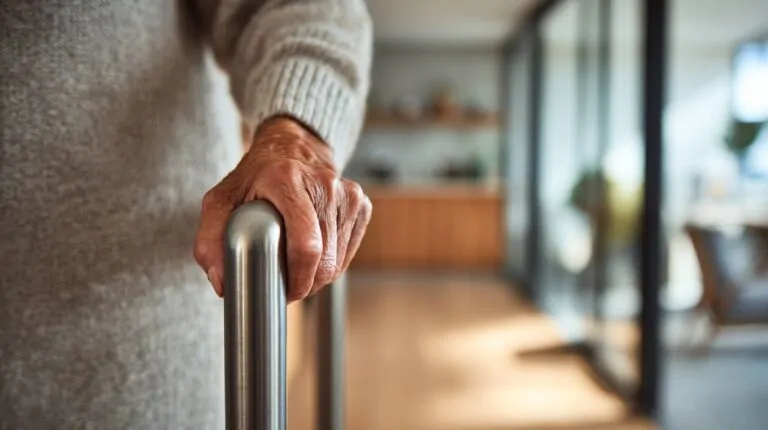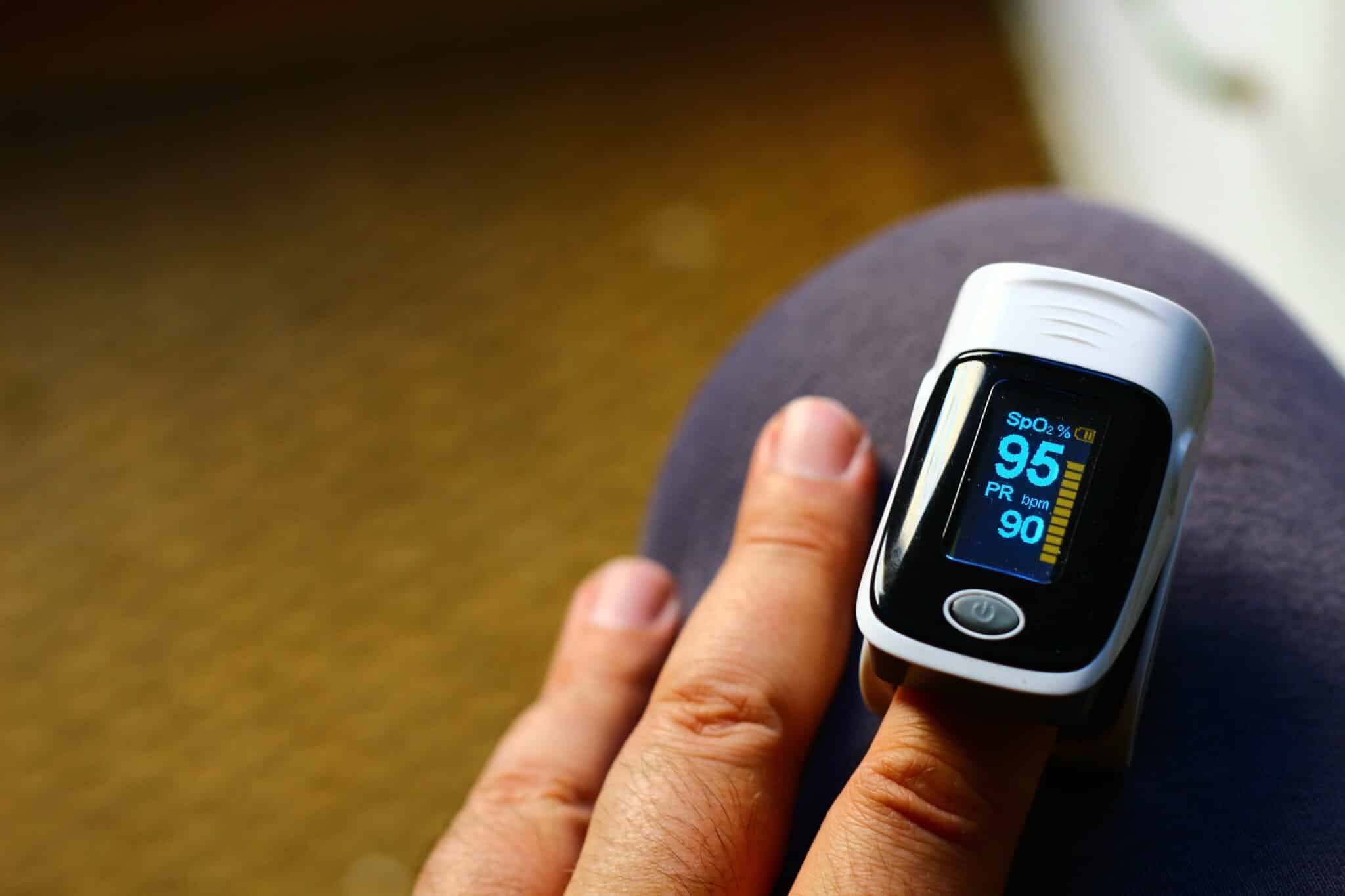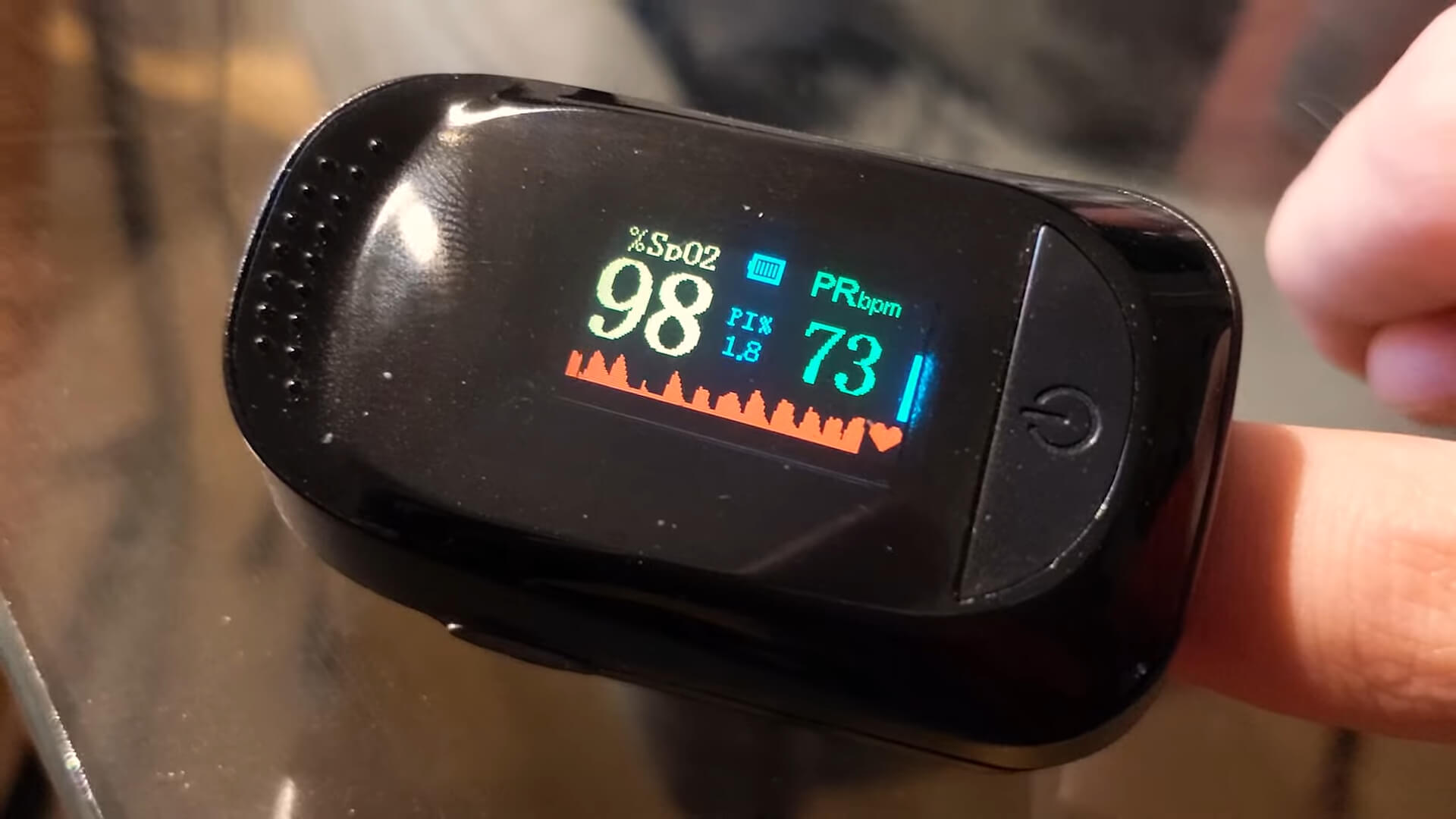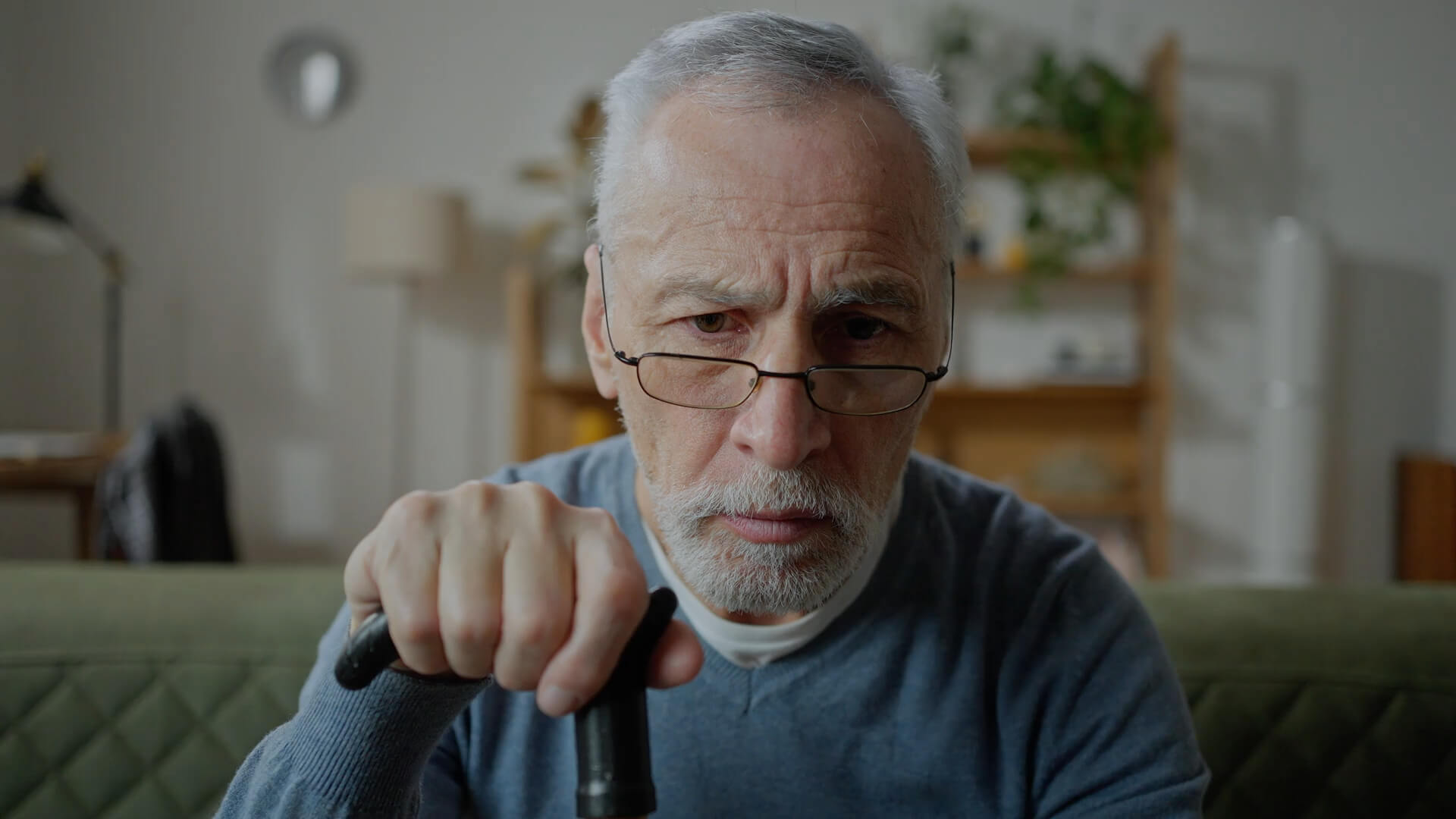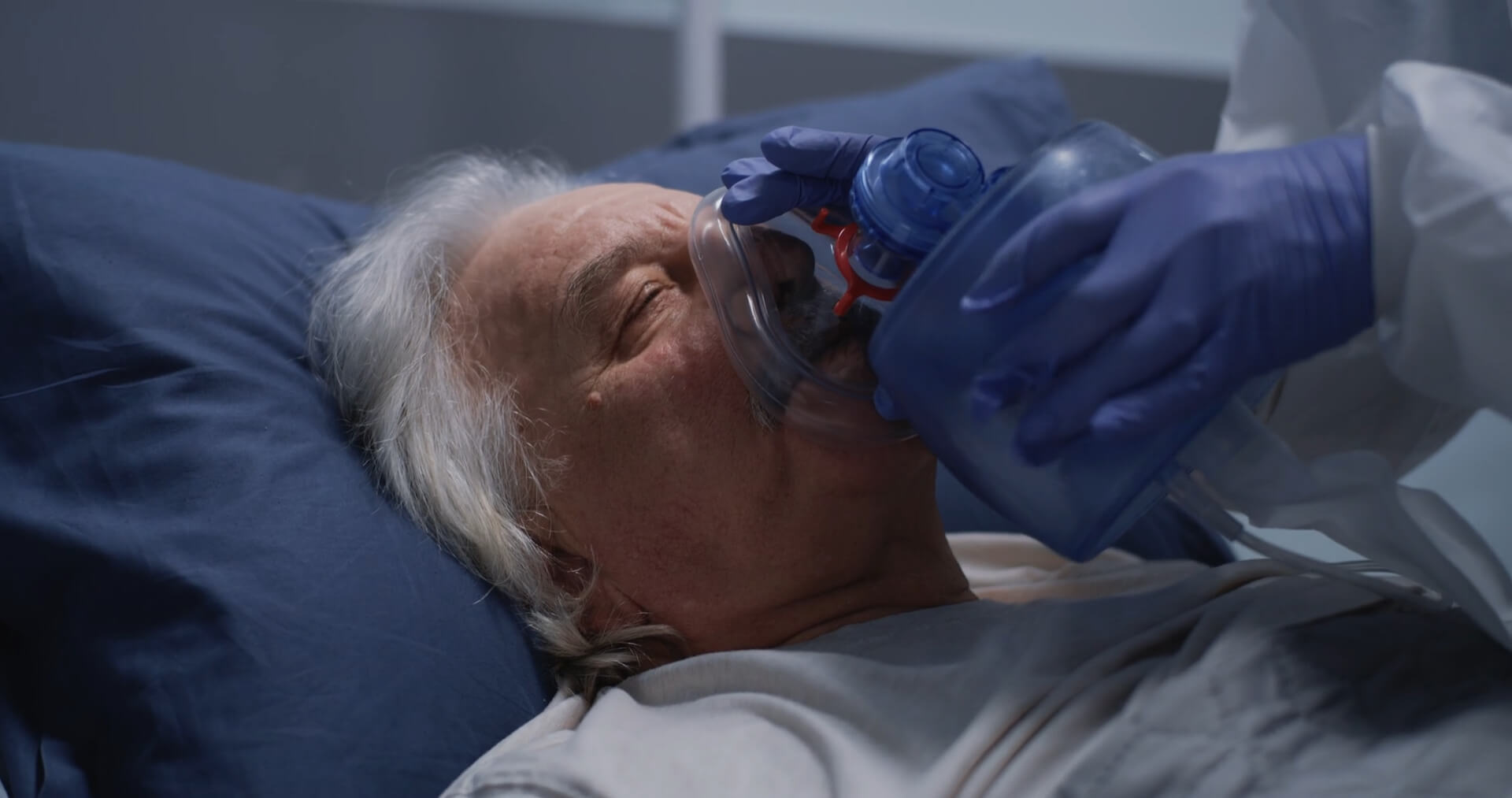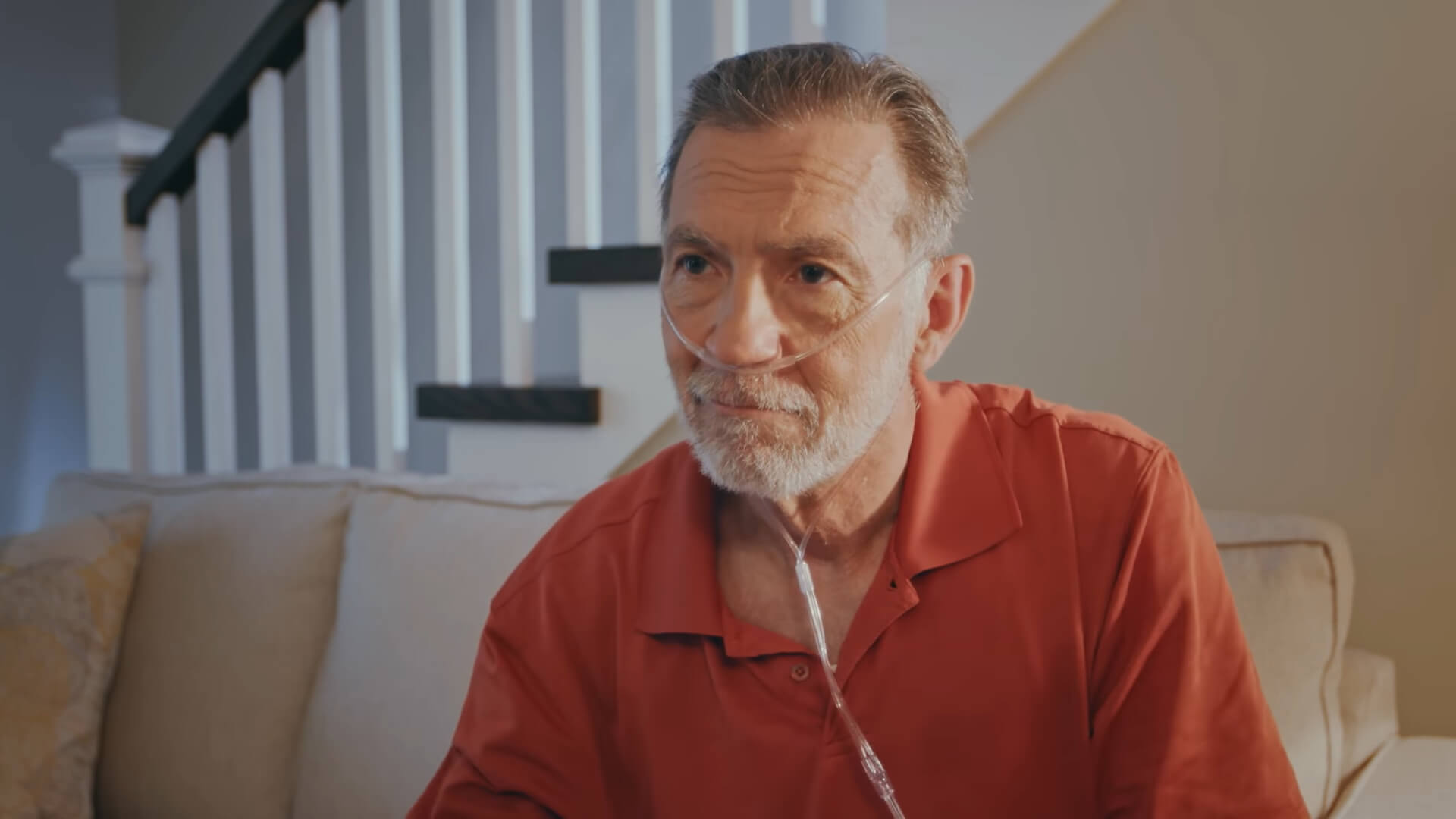Monitoring oxygen levels in elderly adults is crucial for maintaining their health and well-being. As we age, our bodies undergo various changes that can affect oxygen saturation levels, making it essential to recognize when these levels drop to concerning ranges. Understanding what constitutes a normal oxygen level for seniors and identifying the signs of low oxygen can help prevent serious health complications.
In this article, we will explore when you should be concerned about oxygen levels in elderly adults, the potential causes of low oxygen, and what steps you can take to ensure the safety and health of your loved ones.
Table of Contents
ToggleWhat Is a Normal Oxygen Level for Elderly Adults?
A normal oxygen level, or oxygen saturation (SpO₂), typically ranges from 95% to 100% in healthy adults. However, for elderly adults, particularly those over the age of 70, it’s not uncommon for oxygen levels to be slightly lower, with readings around 95% often considered acceptable. It’s important to recognize that as people age, their lung function naturally declines, which can result in a decrease in oxygen saturation.
Oxygen Saturation Levels
Oxygen saturation refers to the percentage of oxygen that your red blood cells carry from the lungs to the rest of the body. This is measured using a pulse oximeter, a small device that clips onto the finger and provides a reading within seconds. While younger adults typically maintain oxygen levels between 97% and 100%, elderly adults might experience slightly lower levels due to various factors, including reduced lung capacity and the presence of chronic health conditions.
Normal SpO₂ Range
For most elderly adults, an oxygen level of 95% to 97% is generally considered normal. However, it’s crucial to understand that certain chronic conditions, such as Chronic Obstructive Pulmonary Disease (COPD), can lead to lower baseline oxygen levels. For individuals with such conditions, oxygen saturation levels as low as 88% to 92% may be considered acceptable under medical supervision.
When Does Low Oxygen Become a Concern?
Oxygen saturation levels below 92% are often a cause for concern, particularly if the individual does not have a pre-existing condition that typically results in lower oxygen levels. Levels below 88% are generally considered dangerously low and may require immediate medical intervention. Persistent low oxygen levels can lead to hypoxemia, a condition where there is insufficient oxygen in the blood, which can eventually cause hypoxia, or low oxygen in the tissues, leading to organ damage.
Factors Affecting Oxygen Levels in the Elderly
Several factors can contribute to lower oxygen levels in elderly adults. These include:
- Age-related lung changes: As the lungs age, their ability to effectively transfer oxygen into the blood decreases.
- Chronic respiratory conditions: Conditions like COPD, emphysema, and bronchitis are more common in the elderly and can significantly reduce oxygen levels.
- Heart conditions: Heart diseases, including congestive heart failure, can impair the body’s ability to circulate oxygen-rich blood.
- Sleep apnea: This condition, characterized by pauses in breathing during sleep, can cause intermittent drops in oxygen levels.
Understanding these factors is crucial for determining when oxygen levels fall outside the normal range and require attention.
Monitoring and Maintaining Healthy Oxygen Levels
Regular monitoring of oxygen levels is essential, especially for elderly adults with known respiratory or cardiovascular issues. Using a pulse oximeter at home can help track these levels and provide early warning signs of potential problems.
It’s also important to ensure that elderly adults receive adequate care, including regular check-ups with healthcare providers who can assess and manage their oxygen levels effectively.
Causes of Low Oxygen Levels in Elderly Adults
Low oxygen levels in elderly adults can be attributed to a variety of factors, many of which are related to age-associated changes in the body or chronic health conditions. Understanding these causes is essential for identifying when oxygen levels may become a concern and ensuring that appropriate interventions are taken to maintain adequate oxygen saturation.
Age-Related Decline in Lung Function
As people age, their lung capacity naturally decreases. The elasticity of the lung tissue reduces, and the muscles involved in breathing weaken, which can impair the lungs’ ability to fully inflate and effectively exchange oxygen and carbon dioxide. This decline in lung function can result in lower oxygen saturation levels, particularly during physical exertion or when the body is under stress.
Chronic Respiratory Conditions
Chronic respiratory diseases are a leading cause of low oxygen levels in elderly adults. Conditions such as Chronic Obstructive Pulmonary Disease (COPD), emphysema, chronic bronchitis, and asthma can significantly reduce lung function, making it difficult for the lungs to absorb sufficient oxygen.
- COPD: This is one of the most common causes of low oxygen levels in the elderly. COPD is characterized by chronic inflammation of the airways and the destruction of lung tissue, which severely limits airflow and oxygen absorption. It’s estimated that around 16 million adults in the United States have COPD, and it is especially prevalent among older adults.
- Emphysema: A form of COPD, emphysema involves the gradual destruction of the air sacs in the lungs, reducing the surface area available for gas exchange. This condition often leads to persistently low oxygen levels, particularly in advanced stages.
- Asthma: While often associated with younger populations, asthma can persist into old age or even develop later in life. Asthma exacerbations can lead to temporary but significant drops in oxygen levels, especially if not properly managed.
Cardiovascular Diseases
Heart conditions are another major contributor to low oxygen levels in elderly adults. The heart is responsible for pumping oxygen-rich blood from the lungs to the rest of the body. When the heart is compromised, it can affect oxygen distribution throughout the body.
- Congestive Heart Failure (CHF): CHF occurs when the heart’s ability to pump blood is weakened, leading to reduced blood flow and oxygen delivery to the body’s tissues. Elderly adults with CHF often experience low oxygen levels, particularly during physical activity or at night.
- Coronary Artery Disease (CAD): CAD, caused by the narrowing of the coronary arteries, reduces blood flow to the heart muscle, which can also impact the heart’s efficiency in oxygenating the blood.
Sleep Apnea
Sleep apnea is a condition where breathing repeatedly stops and starts during sleep. It is more common in older adults and can lead to significant drops in oxygen levels, particularly during sleep. The repeated episodes of apnea cause oxygen saturation to fluctuate, sometimes dropping to dangerously low levels. Over time, untreated sleep apnea can lead to serious complications, including heart disease and cognitive impairment.
Infections and Acute Conditions
Certain infections and acute conditions can also cause a sudden drop in oxygen levels. Pneumonia, for example, is a common respiratory infection in elderly adults that can severely impact lung function and reduce oxygen levels. Similarly, acute conditions such as pulmonary embolism, where a blood clot blocks an artery in the lungs, can cause a sudden and dramatic drop in oxygen saturation.
- Pneumonia: This infection inflames the air sacs in the lungs, which may fill with fluid or pus, leading to difficulty in breathing and reduced oxygen absorption. Pneumonia is particularly dangerous for elderly adults, often leading to hospitalization and, in severe cases, requiring oxygen therapy.
- Pulmonary Embolism: A pulmonary embolism is a blockage in one of the pulmonary arteries in the lungs, typically caused by blood clots that travel from the legs or other parts of the body. This condition can cause a sudden drop in oxygen levels and is a medical emergency.
Medications and Sedatives
Certain medications, particularly sedatives and pain relievers, can depress the respiratory system, leading to lower oxygen levels. These medications can slow down breathing, reducing the amount of oxygen taken in and leading to hypoxemia. It’s essential for elderly adults on such medications to be closely monitored for any signs of respiratory depression.
Environmental Factors
High altitudes can also lead to lower oxygen levels due to the reduced availability of oxygen in the air. Elderly adults traveling to high-altitude areas may experience difficulty in maintaining normal oxygen levels and may require supplemental oxygen.
Signs and Symptoms of Low Oxygen Levels
Recognizing the signs and symptoms of low oxygen levels in elderly adults is critical for timely intervention and preventing serious health complications. Low oxygen levels, also known as hypoxemia, can manifest in various ways, some of which may be subtle or mistaken for general signs of aging. However, understanding these symptoms and their implications can help in identifying when medical attention is necessary.
Common Symptoms of Low Oxygen Levels
Low oxygen levels in the blood can lead to a variety of symptoms, many of which affect the body’s vital functions. Some of the most common symptoms include:
- Shortness of Breath (Dyspnea): One of the most noticeable signs of low oxygen levels is difficulty breathing or shortness of breath. This can occur even during mild physical activities or at rest and may worsen over time if not addressed.
- Rapid Breathing (Tachypnea): In response to low oxygen levels, the body may increase the breathing rate in an attempt to bring in more oxygen. This rapid breathing can be uncomfortable and lead to a sense of panic in some individuals.
- Chest Pain: A lack of oxygen can cause chest pain, particularly if the heart is working harder to pump oxygenated blood throughout the body. This symptom should be taken seriously, especially if it is persistent or severe.
- Confusion and Cognitive Impairment: The brain is highly sensitive to oxygen levels, and insufficient oxygen can lead to confusion, memory problems, and difficulty concentrating. These cognitive changes may be mistaken for age-related cognitive decline but can be a sign of hypoxemia.
- Bluish Discoloration (Cyanosis): When oxygen levels drop significantly, the skin, lips, and nails may develop a bluish tint due to the lack of oxygenated blood. Cyanosis is a clear visual indicator of hypoxemia and requires immediate medical attention.
- Fatigue and Weakness: Low oxygen levels can lead to general fatigue and muscle weakness, as the body does not receive enough oxygen to support physical activity. This can make simple tasks feel exhausting and may limit the individual’s ability to perform daily activities.
Less Common Symptoms of Low Oxygen Levels
In addition to the more obvious symptoms, low oxygen levels can also cause less common signs that might not be immediately recognized as related to hypoxemia:
- Headache: Persistent headaches can be a sign of low oxygen levels, particularly if they occur frequently and are accompanied by other symptoms such as dizziness or nausea.
- Visual Disturbances: Hypoxemia can affect vision, leading to blurred vision, double vision, or even temporary loss of vision in severe cases.
- Restlessness and Agitation: Low oxygen levels can cause feelings of restlessness, anxiety, and agitation, as the body responds to the stress of insufficient oxygen.
- High Blood Pressure (Hypertension): The body may respond to low oxygen levels by increasing blood pressure in an attempt to circulate more oxygenated blood. This can contribute to the development of hypertension, especially in individuals with existing cardiovascular issues.
How to Monitor Symptoms Effectively
Given the range of symptoms that can indicate low oxygen levels, regular monitoring is essential, particularly for elderly adults with chronic health conditions. Using a pulse oximeter can help track oxygen saturation levels and provide early warning signs of hypoxemia. Additionally, caregivers and family members should be aware of the symptoms and take action if any concerning signs arise.
It is important to note that symptoms of low oxygen levels can develop gradually or suddenly, depending on the underlying cause. Immediate medical attention should be sought if symptoms like severe shortness of breath, chest pain, or cyanosis occur.
When Should You Be Concerned About Oxygen Levels?
Monitoring oxygen levels in elderly adults is essential, but knowing when to be genuinely concerned is even more critical. While slight fluctuations in oxygen levels can be normal, especially in older adults, certain thresholds and symptoms should trigger concern and immediate medical attention.
Critical Oxygen Level Thresholds
For most adults, an oxygen saturation level (SpO₂) of 95% to 100% is considered normal. However, when levels drop below 92%, it indicates that the body may not be getting enough oxygen. This level is often considered the threshold at which medical attention is required, especially in elderly adults. Persistent oxygen levels below 88% are considered dangerously low and can lead to severe complications if not addressed promptly.
- SpO₂ 95%-100%: Normal range, generally no cause for concern.
- SpO₂ 92%-94%: Low but often manageable; may require monitoring and possible medical evaluation.
- SpO₂ < 92%: Concerning; should prompt medical consultation, especially if accompanied by symptoms.
- SpO₂ < 88%: Critical; requires immediate medical attention.
When to Seek Medical Attention
Immediate medical attention is necessary if oxygen levels fall below 92% and the individual shows symptoms of hypoxemia or hypoxia. Some situations where you should be particularly concerned include:
- Persistent Shortness of Breath: If the elderly individual experiences ongoing difficulty breathing, even at rest, and this is accompanied by low oxygen levels, it is crucial to seek medical help.
- Chest Pain and Rapid Heart Rate: These symptoms, combined with low oxygen saturation, may indicate that the heart is under significant strain, potentially leading to a heart attack or other cardiovascular emergencies.
- Cyanosis (Bluish Discoloration): A bluish tint to the skin, lips, or nails is a sign that the blood is not receiving enough oxygen, and this requires immediate medical intervention.
- Confusion and Mental Changes: Sudden changes in mental status, such as confusion, disorientation, or difficulty concentrating, can be a sign that the brain is not getting enough oxygen. This is especially concerning in elderly adults, who may already be at risk for cognitive decline.
Oxygen Levels in Chronic Conditions
For elderly adults with chronic respiratory conditions such as COPD, the normal oxygen saturation range may differ. In such cases, a lower baseline oxygen level (e.g., 88%-92%) might be acceptable under the guidance of a healthcare provider. However, any significant drop from their usual oxygen levels, especially if accompanied by new or worsening symptoms, should be addressed immediately.
- COPD Patients: For individuals with COPD, maintaining oxygen levels between 88% and 92% is often considered acceptable. However, oxygen levels below this range, especially if coupled with respiratory distress, require immediate attention.
- Heart Failure Patients: For those with congestive heart failure, oxygen levels below 92% can indicate worsening heart function and should be addressed promptly.
The Role of Pulse Oximetry in Monitoring
Using a pulse oximeter to regularly check oxygen levels can help catch problems early, especially for elderly adults with known respiratory or cardiovascular conditions. It’s important to establish what is “normal” for the individual and to act quickly if levels deviate significantly from this baseline.
Steps to Take If Oxygen Levels Are Low
When oxygen levels in elderly adults drop below the normal range, it’s essential to take immediate action to prevent serious health complications. Addressing low oxygen levels promptly can make a significant difference in the individual’s overall well-being and can even be life-saving in critical situations.
Immediate Actions to Take
If you notice that an elderly adult’s oxygen saturation level has dropped below 92%, and especially if it is below 88%, the following steps should be taken immediately:
- Administer Supplemental Oxygen: If the individual has a prescription for supplemental oxygen, ensure that it is administered according to the doctor’s instructions. Oxygen can be delivered through various devices such as nasal cannulas, face masks, or oxygen concentrators, depending on the severity of the hypoxemia.
- Positioning: Help the individual into a comfortable, upright position to maximize lung expansion. This can improve breathing and increase oxygen intake. Sitting up or using pillows to prop up the upper body can make it easier for the lungs to function more effectively.
- Deep Breathing Exercises: Encourage the individual to take slow, deep breaths to help increase the amount of oxygen entering the lungs. Breathing exercises can sometimes help stabilize oxygen levels, especially if the drop is due to temporary factors like anxiety or mild respiratory issues.
- Monitor Vital Signs: Keep a close eye on the individual’s oxygen levels, heart rate, and breathing pattern. Use a pulse oximeter to regularly check their oxygen saturation. If the levels do not improve or continue to decline, seek medical help immediately.
- Check for Underlying Causes: If the drop in oxygen levels is sudden, try to identify any immediate factors that might be contributing, such as exposure to allergens, infections like pneumonia, or the use of medications that depress breathing.
When to Call Emergency Services
If the elderly adult’s oxygen levels remain below 88% despite administering supplemental oxygen, or if they experience severe symptoms like chest pain, confusion, or cyanosis, it is critical to call emergency services immediately. Hypoxemia can quickly lead to life-threatening conditions such as respiratory failure, so it’s important not to delay in seeking professional medical help.
- Persistent Symptoms: Even if oxygen levels rise slightly, but symptoms like severe shortness of breath, chest pain, or altered mental status persist, emergency medical attention is required.
- Worsening Conditions: If the individual’s condition worsens despite intervention, do not wait for symptoms to improve on their own. Immediate hospitalization may be necessary to stabilize oxygen levels and address any underlying causes.
Long-Term Management
For elderly adults who are prone to low oxygen levels due to chronic conditions like COPD or heart failure, it’s essential to have a long-term management plan in place. This plan should be developed in consultation with healthcare providers and may include the following:
- Regular Monitoring: Consistent monitoring of oxygen levels using a pulse oximeter can help detect early signs of hypoxemia. It’s important to establish a baseline for what is normal for the individual and to act quickly if levels deviate from this range.
- Medication Management: Ensure that all medications are taken as prescribed, particularly those that help manage respiratory or cardiovascular conditions. Regular reviews of medications with a healthcare provider can help prevent drug interactions that might lower oxygen levels.
- Lifestyle Adjustments: Encourage a healthy lifestyle that includes regular exercise (as appropriate), a balanced diet, and avoiding smoking or exposure to pollutants. These changes can improve overall lung function and reduce the likelihood of low oxygen levels.
- Oxygen Therapy: For those with chronic low oxygen levels, long-term oxygen therapy may be necessary. This therapy should be tailored to the individual’s needs, with regular adjustments as recommended by healthcare professionals.
Prevention
Preventing low oxygen levels in elderly adults involves proactive management of their health and environment. By taking specific steps, caregivers and individuals can minimize the risk of hypoxemia and maintain healthy oxygen saturation levels. This proactive approach not only helps in preserving overall health but also reduces the likelihood of emergencies related to low oxygen levels.
Regular Monitoring and Check-Ups
One of the most effective ways to prevent low oxygen levels is through regular monitoring. Using a pulse oximeter at home allows for the frequent checking of oxygen saturation levels, which can help detect early signs of hypoxemia. In addition to at-home monitoring, regular check-ups with healthcare providers are crucial, especially for elderly adults with chronic conditions that affect lung or heart function.
- Routine Monitoring: Establish a routine for checking oxygen levels, especially after physical activities or when the individual is experiencing symptoms like shortness of breath.
- Medical Check-Ups: Regular visits to the doctor ensure that any potential issues are identified early and managed effectively. This is particularly important for those with chronic conditions such as COPD, heart failure, or asthma.
Managing Chronic Conditions
For elderly adults with chronic respiratory or cardiovascular conditions, managing these conditions effectively is key to preventing low oxygen levels. This may involve taking prescribed medications consistently, following a recommended diet, and engaging in appropriate physical activities.
- Medication Adherence: Ensure that all prescribed medications are taken as directed by healthcare providers. Medications that help manage chronic conditions like COPD or heart failure can prevent drops in oxygen levels by improving lung and heart function.
- Lifestyle Adjustments: A healthy lifestyle that includes regular exercise, smoking cessation, and a balanced diet can significantly improve lung and cardiovascular health, reducing the risk of hypoxemia.
Environmental Adjustments
Creating a safe and healthy living environment can also play a significant role in preventing low oxygen levels. This includes ensuring good air quality, avoiding exposure to pollutants, and making necessary adjustments for individuals with mobility issues.
- Air Quality: Maintain good indoor air quality by using air purifiers and avoiding exposure to tobacco smoke, dust, and other pollutants that can irritate the lungs.
- Altitude Awareness: Be aware of the effects of high altitudes on oxygen levels. If the individual is traveling to a high-altitude location, consider the need for supplemental oxygen or other precautions.
Encouraging Proper Breathing Techniques
Teaching elderly adults proper breathing techniques can help improve their oxygen intake and prevent low oxygen levels. This can be particularly beneficial for those with chronic respiratory conditions.
- Breathing Exercises: Techniques such as pursed-lip breathing and diaphragmatic breathing can help increase lung efficiency and oxygen intake. These exercises are simple to learn and can be practiced regularly to maintain healthy oxygen levels.
Nutrition and Hydration
Proper nutrition and hydration play a vital role in maintaining overall health, including lung and heart function. A diet rich in essential nutrients supports the body’s ability to produce healthy red blood cells and maintain adequate oxygen levels.
- Balanced Diet: Ensure that the diet includes plenty of fruits, vegetables, lean proteins, and whole grains. These foods provide essential nutrients that support cardiovascular and respiratory health.
- Hydration: Staying well-hydrated helps keep the mucous membranes in the respiratory tract moist, making it easier to breathe and improving oxygen exchange in the lungs.
Avoiding Respiratory Infections
Respiratory infections like pneumonia can significantly impact oxygen levels in elderly adults. Preventing these infections is crucial for maintaining healthy oxygen levels.
- Vaccinations: Ensure that the individual receives vaccinations for flu, pneumonia, and other common respiratory infections. Vaccinations are a key preventive measure for reducing the risk of infections that can lower oxygen levels.
- Hand Hygiene: Encourage regular hand washing and the use of hand sanitizers to reduce the risk of infections. Avoiding crowded places, especially during flu season, can also help prevent respiratory infections.
Physical Activity and Exercise
Regular physical activity helps improve lung capacity and cardiovascular function, which are essential for maintaining healthy oxygen levels. However, the type and intensity of exercise should be tailored to the individual’s health status.
- Appropriate Exercise: Engage in exercises that are suitable for the individual’s physical condition, such as walking, swimming, or gentle yoga. These activities can help improve lung function and overall stamina without causing undue strain.
- Physical Therapy: For those with limited mobility, physical therapy can provide targeted exercises that help improve breathing and oxygen levels.
How Can Oxygen Therapy Help?
Oxygen therapy is a critical intervention for elderly adults who experience chronic low oxygen levels, also known as hypoxemia. This therapy involves the administration of supplemental oxygen to maintain adequate oxygen saturation levels in the blood, thereby preventing the complications associated with prolonged hypoxia. Understanding when and how oxygen therapy is used, as well as its benefits and potential risks, is essential for effectively managing low oxygen levels in elderly adults.
When Is Oxygen Therapy Needed?
Oxygen therapy is typically prescribed when an individual’s oxygen saturation levels consistently fall below 88%, or in cases where symptoms of hypoxemia are evident, even at higher oxygen levels. This therapy is often used in the treatment of chronic respiratory conditions, such as Chronic Obstructive Pulmonary Disease (COPD), as well as in acute situations where oxygen levels drop due to infections or other health issues.
- Chronic Conditions: For conditions like COPD, long-term oxygen therapy may be necessary to ensure that the body receives enough oxygen to function properly. This is particularly important in elderly adults, who may have reduced lung function and are more susceptible to the effects of low oxygen levels.
- Acute Conditions: Oxygen therapy may also be used temporarily during acute health crises, such as pneumonia or heart failure, where oxygen levels drop suddenly and require stabilization.
Types of Oxygen Therapy
There are several types of oxygen therapy, each tailored to the needs of the individual. The type of therapy prescribed depends on the severity of the hypoxemia, the underlying health condition, and the individual’s lifestyle.
- Continuous Flow Oxygen: This is the most common form of oxygen therapy, where oxygen is delivered at a constant rate through nasal cannulas or face masks. It is often used for individuals who need a steady supply of oxygen throughout the day and night.
- Pulse Dose Oxygen: This type of therapy delivers oxygen only when the individual inhales, which conserves oxygen and is often used in portable oxygen devices. Pulse dose oxygen is suitable for individuals who require supplemental oxygen primarily during activity or movement.
- High-Flow Oxygen Therapy: Used in more severe cases, high-flow oxygen therapy delivers a higher concentration of oxygen and is typically administered in a hospital setting. It can be life-saving in situations where normal oxygen delivery methods are insufficient.
Benefits of Oxygen Therapy
Oxygen therapy provides numerous benefits for elderly adults with low oxygen levels, helping to improve their quality of life and prevent the complications associated with hypoxemia.
- Increased Energy Levels: By ensuring that the body’s tissues receive adequate oxygen, oxygen therapy can help alleviate fatigue and weakness, allowing elderly adults to engage more fully in daily activities.
- Improved Cognitive Function: Adequate oxygen levels are crucial for brain health. Oxygen therapy can help prevent confusion, memory problems, and other cognitive issues related to low oxygen levels.
- Enhanced Sleep Quality: Many elderly adults experience low oxygen levels during sleep, particularly those with sleep apnea. Oxygen therapy can help maintain stable oxygen levels throughout the night, leading to better sleep and reduced daytime drowsiness.
- Prevention of Complications: Long-term oxygen therapy can prevent the serious complications of chronic hypoxemia, such as heart strain, pulmonary hypertension, and damage to vital organs.
Potential Risks and Side Effects of Oxygen Therapy
While oxygen therapy is generally safe, there are potential risks and side effects that need to be considered, particularly with long-term use.
- Oxygen Toxicity: Prolonged exposure to high levels of oxygen can lead to oxygen toxicity, which can damage the lungs and other organs. It is important to follow the prescribed oxygen levels and not exceed them without medical advice.
- Skin and Nasal Irritation: The use of nasal cannulas and face masks can cause irritation and dryness of the skin and nasal passages. Regular cleaning and proper fitting of the equipment can help minimize these effects.
- Fire Hazard: Oxygen is highly flammable, so it is important to follow safety precautions, such as avoiding open flames and smoking near oxygen equipment.
FAQs
How can I tell if my elderly parent has low oxygen levels?
If your elderly parent shows signs such as shortness of breath, confusion, bluish lips or skin (cyanosis), or extreme fatigue, it may indicate low oxygen levels. You can use a pulse oximeter to check their oxygen saturation levels at home. If the reading is consistently below 92%, it’s essential to consult a healthcare provider.
What are the dangers of long-term oxygen therapy?
Long-term oxygen therapy can be life-saving but comes with risks like oxygen toxicity, which can damage the lungs if too much oxygen is administered. Other potential dangers include skin irritation from the equipment and increased fire hazards due to the flammability of oxygen. It’s crucial to follow prescribed levels and safety guidelines.
Can low oxygen levels cause memory problems in elderly adults?
Yes, low oxygen levels can impair brain function, leading to memory problems, confusion, and difficulty concentrating. Chronic hypoxia, where the brain receives insufficient oxygen over time, can contribute to cognitive decline and worsen conditions like dementia.
Is it normal for elderly adults to have lower oxygen levels during sleep?
It’s common for oxygen levels to drop slightly during sleep, especially in elderly adults. However, significant drops, particularly in those with sleep apnea, can be concerning and may require medical evaluation and potentially the use of oxygen therapy or other interventions.
How often should oxygen levels be checked?
The frequency of checking oxygen levels depends on the individual’s health status. For those with chronic respiratory or cardiovascular conditions, daily monitoring might be necessary. For others, regular checks during routine health assessments or when symptoms arise may suffice. Always follow the advice of a healthcare provider regarding monitoring frequency.
Last Words
Monitoring and managing oxygen levels in elderly adults is crucial for their health and well-being. Understanding the normal ranges, recognizing the signs of low oxygen, and knowing when to seek medical help can prevent serious complications. Regular monitoring, effective management of chronic conditions, and the appropriate use of oxygen therapy are key strategies in maintaining healthy oxygen levels.
Related Posts:
- 11 Common Causes of Low Oxygen Levels in Elderly Adults
- When Should Elderly Drivers Consider Limiting Their Driving?
- How to Tell If Aging Is Catching Up to You Faster…
- Why Elderly Adults Might Start Leaning to One Side
- Dental Health After 60 - Everything Seniors Should Know
- At What Age Are You Considered Elderly?

